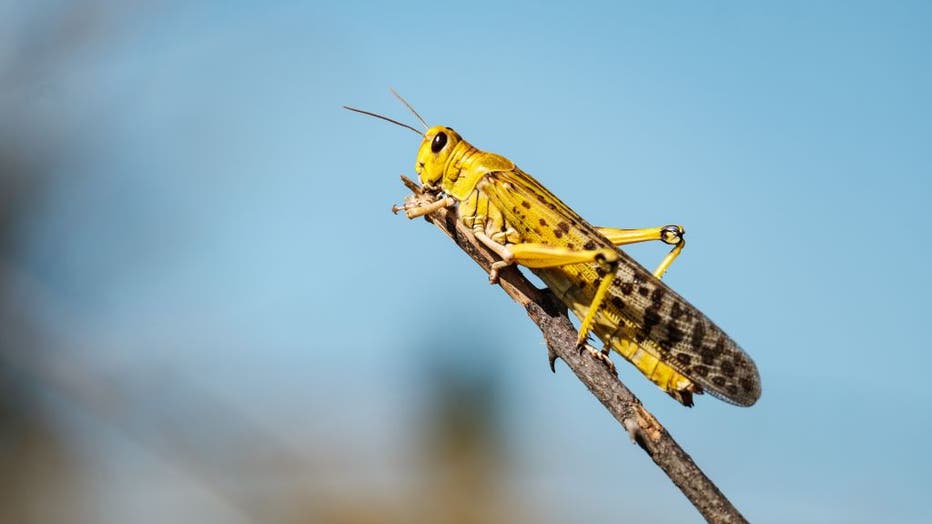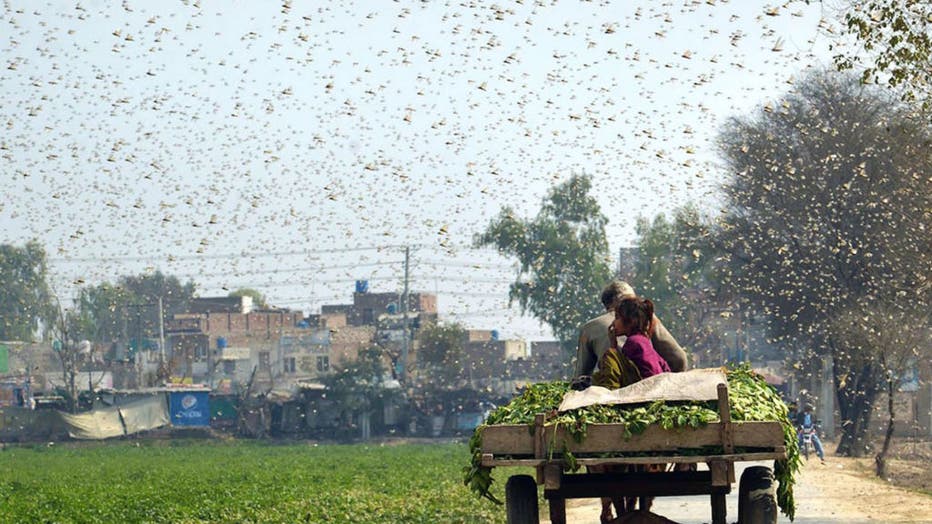Massive locust outbreak in Africa threatens to spread
Swarms of locusts land and feed on shea trees, which are a big source of food and income for local farmers, in Otuke on February 17, 2020. - Locust swarms have slowly been arriving into northern Uganda from neighbouring Kenya, threatening the livelih
NEW YORK - The worst locust outbreak that parts of East Africa have seen in 70 years has reached South Sudan, a country where roughly half the population already faces hunger after years of civil war, officials announced Tuesday.
Around 2,000 locusts were spotted inside the country, Agriculture Minister Onyoti Adigo told reporters. Authorities will try to control the outbreak, he added.

Swarms of locusts land and feed on shea trees, which are a big source of food and income for local farmers, in Otuke on February 17, 2020. - Locust swarms have slowly been arriving into northern Uganda from neighbouring Kenya, threatening the livelih
The locusts have been seen in Eastern Equatoria state near the borders with Ethiopia, Kenya and Uganda. All have been affected by the outbreak that has been influenced by the changing climate in the region.
The situation in those three countries “remains extremely alarming,” the U.N. Food and Agriculture Organization said in its latest Locust Watch update Monday. Locusts also have reached Sudan, Eritrea, Tanzania and more recently Uganda.
The soil in South Sudan's Eastern Equatoria has a sandy nature that allows the locusts to lay eggs easily, said Meshack Malo, country representative with the FAO.
At this stage “if we are not able to deal with them ... it will be a problem,” he said.
South Sudan is even less prepared than other countries in the region for a locust outbreak, and its people are arguably more vulnerable. More than 5 million people are severely food insecure, the U.N. humanitarian office says in its latest assessment, and some 860,000 children are malnourished.
Five years of civil war shattered South Sudan's economy, and lingering insecurity since a 2018 peace deal continues to endanger humanitarians trying to distribute aid. Another local aid worker was shot and killed last week, the U.N. said Tuesday.
The locusts have traveled across the region in swarms the size of major cities. Experts say their only effective control is aerial spraying with pesticides, but U.N. and local authorities have said more aircraft and pesticides are required. A handful of planes have been active in Kenya and Ethiopia.
The U.N. has said $76 million is needed immediately. On Tuesday, U.S. Secretary of State Mike Pompeo during a visit to Ethiopia said the U.S. would donate another $8 million to the effort. That follows an earlier $800,000.
The number of overall locusts could grow up to 500 times by June, when drier weather begins, experts have said. Until then, the fear is that more rains in the coming weeks will bring fresh vegetation to feed a new generation of the voracious insects.
South Sudanese ministers called for a collective regional response to the outbreak that threatens to devastate crops and pasturage.

OKARA, Feb. 15, 2020 -- Photo taken with mobile phone on Feb. 15, 2020 shows a farmer riding a cart as locusts swarming in Okara district in eastern Pakistan's Punjab province. Locust attack on crops incurred heavy financial losses to farmers in some

